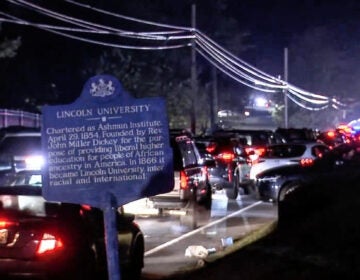The next big storm could hit Coatesville. Will the flood-prone city be ready?
Modernizing the city’s aging stormwater system is crucial, but like other municipalities in Chester County, the price is high — and the stakes are even higher.
Listen 4:15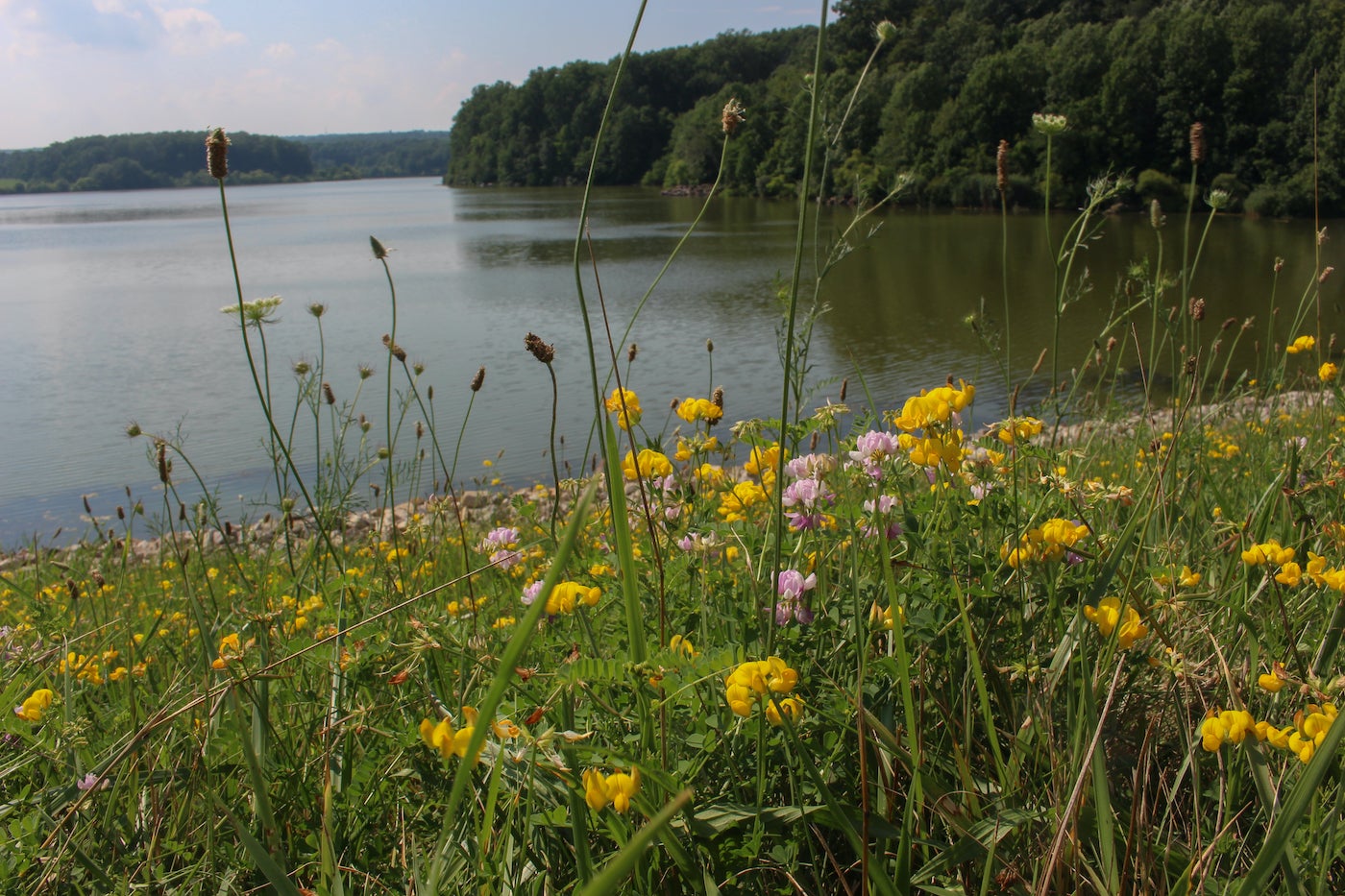
Erosion-controlling plants grow along the slopes of the Hibernia Dam. (Gina E. Kim/WHYY)
Got a question about life in Philly’s suburbs? Our suburban reporters want to hear from you! Ask us a question or send an idea for a story you think we should cover.
There are 41 pressing upcoming economic development projects in Coatesville. James Logan, city manager, takes pride in the area’s decades-long, underdog journey from booming industrial hub to rust belt poster child to comeback kid.
“Coatesville has made a tremendous turnaround from the perception of being an unsafe community, where they don’t have restaurants or places to eat or entertainment or resources for people to come in and just enjoy themselves, to a city that is on the rise,” Logan said.
But Coatesville’s precarious location along the Brandywine Creek in Chester County has placed a target on the former steel town.
Extreme weather supercharged by the climate crisis has increased the severity of frequent flooding. The city “on the rise” could sink before it even has a chance to reach new heights.
Beneath the city’s burgeoning development is an aging stormwater infrastructure that is more than 60 years old. Coatesville is banking on it to stay afloat. Modernizing this system and increasing its capacity to take on more water is paramount to the city’s survival. But so far, the upgrades have not materialized.
In May, the Federal Emergency Management Agency (FEMA) awarded Coatesville a $621,360 grant to cover the costs of project scoping activities, which is some of the preliminary work needed before any construction can begin on a long-term resiliency solution.
But any physical changes to stormwater infrastructure are likely years away from being years away. Coatesville officials estimate it will cost at least $9 million to make the necessary improvements. For comparison, the city only raked in $10.7 million in revenue in 2020. It will take a while for officials to raise the funds needed for a complete overhaul, which is time the city might not have.
“It’s really important because residents are afraid,” Logan said.
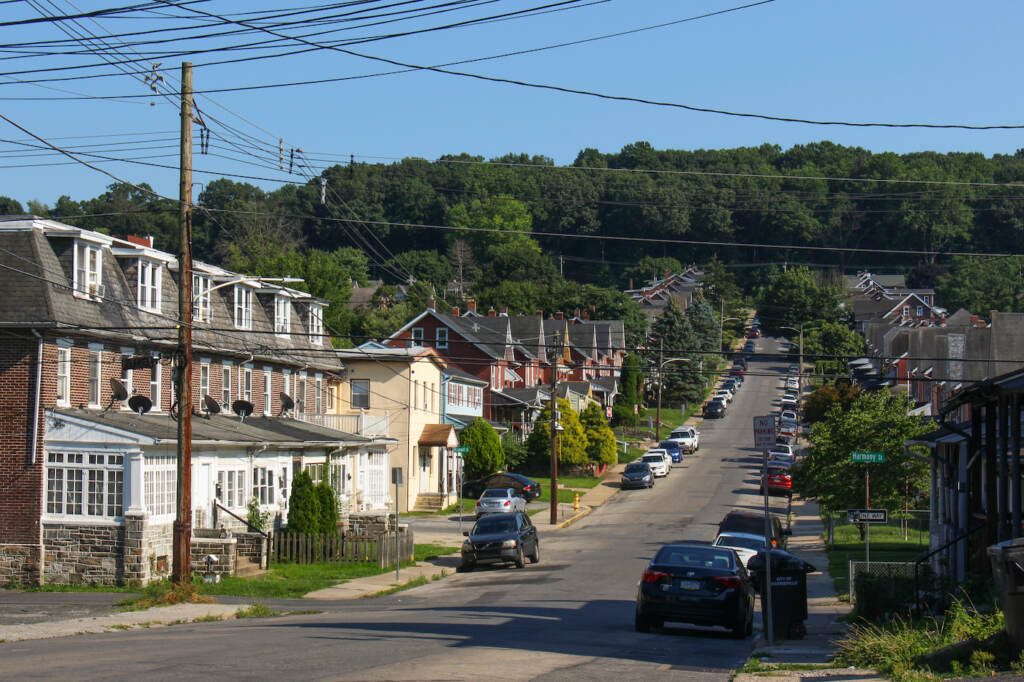
How have recent storms like Hurricane Ida impacted Coatesville?
Coatesville residents are no strangers to storms and flooding. According to the city’s 2021 stormwater report, more than seven inches of rain fell in a span of one hour during a day in June. But the downpour drenched Coatesville for even longer.
The fallout: 50 percent of the city went underwater. As much as six feet of rain inundated some of the lowest-lying areas. A mudslide barreled onto Route 82, cutting off traffic. In the end, Coatesville deemed 10 homes in “ground-zero” unsafe to live in and declared a state of emergency.
Logan recalled speaking with some emergency service experts and receiving a sobering message about the infrastructure that was supposed to keep something like this from happening.
“They said ‘the best stormwater management system would not have been able to mitigate the water that came in,’” Logan said.
The June storm foreshadowed what was yet to come a few months later.
On September 1, 2021, Ida’s heavy rains eventually dwarfed the impact of the previous unnamed storm, displacing another 132 Coatesville residents. The former industrial hub declared another state of emergency. Officials huddled together and sent a status report to county officials.
“With the increasing potential of more storms and rainfall totals, some reaching 12 inches in less than four hours, the current system will not manage the volume required resulting in more property loss, infrastructure damage, and possible loss of life if not corrected,” the stormwater report’s preface read.
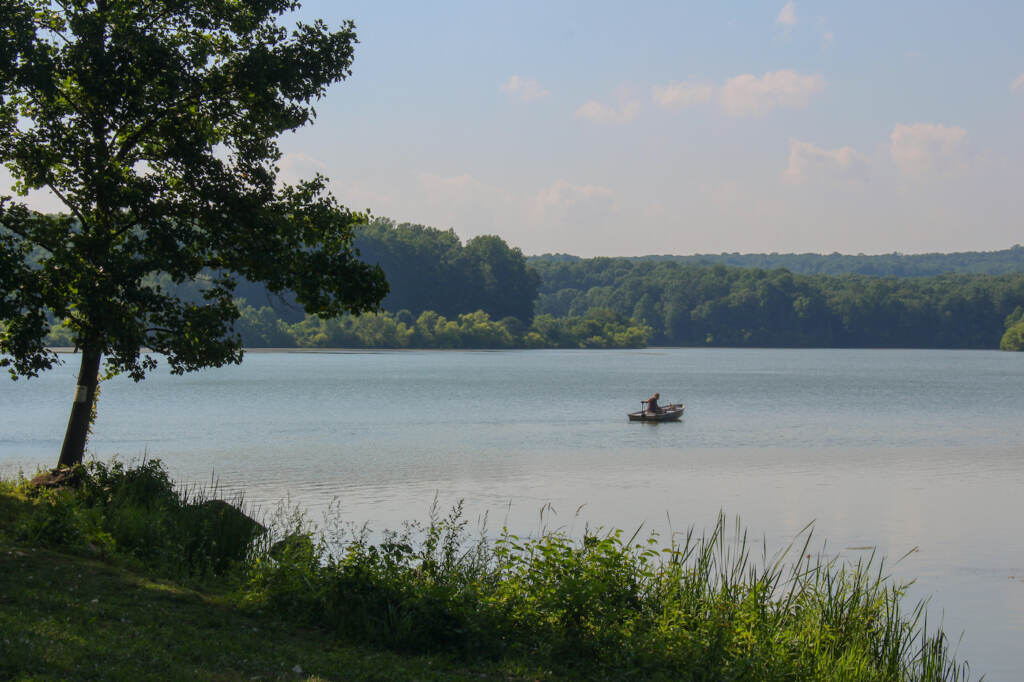
What is Coatesville doing to address flooding?
Ida revealed many deficiencies in Coatesville’s six-decades-old system. From outdated pipes to the inability to manage high volumes of water, the city just isn’t prepared for another Ida-sized storm.
“We know it’s just a matter of time before heavy rains strike again. Our only resolution until a comprehensive repair plan is implemented is the hope for a lighter rain season,” Logan said.
But Coatesville isn’t sitting on its hands. Currently, officials from both the emergency services team and the public works department, routinely clear out debris from the city’s inlets to reduce the risk of flooding ahead of storms.
Logan said Coatesville also submitted an application to the county for a $9 million grant proposal for stormwater infrastructure repairs and reconfiguration. The county denied the request.
He reasoned that the county often looks for “shovel-ready” projects. He understood that what Coatesville was requesting didn’t align with the county’s expectations and that the high dollar figure was probably “unexpected” for the county to see. However, Logan said the application was based on city engineers’ projections and analyses following Ida.
“We were invited back to submit another application to do some of the preliminary design work on what this infrastructure would look like. So we did send in an application for that. That’s in the neighborhood of close to $700,000,” Logan said.
Colleen Terry, president of Radnor-based ECON partners, works as a consultant for Coatesville to help the city secure public funding. Terry helped Coatesville pull in the recent FEMA grant. The money will go towards cost analysis for the Gibbons-Run culvert area, which is where some of the city’s worst flooding is.
“The ultimate goal is to obtain a larger amount of money to do the construction. But there was a gap that we had been struggling for some time to figure out how [to fill]. The city is not going to be able to afford $621,000 to design and engineer and conduct alternative analysis for this stormwater issue,” Terry said.
Logan and Terry thanked both FEMA and PEMA as well as local, state, and federal officials for connecting the “dots” and getting this proposal across the finish line.
“This isn’t a five-year solution or a 10-year solution, it’s a 20 to 30-year solution for stormwater in the city, which is a tremendous opportunity,” Terry said.
Terry said there is no quick fix to avoiding catastrophe in a city built along a floodplain that is encroaching further onto the built environment due to climate change. Coatesville officials would like to keep its current building structures upright and its citizens safe.
“But really the ultimate situation is there are no buildings and structures in the floodplain — and that’s not a solution for the city is to tear down blocks of houses. I mean, ultimately, that’s what FEMA would like to see. So what the city is trying to do is a compromise solution,” Terry said.
She emphasized that upgrades can’t be rushed because of safety concerns. But Terry added the “city is certainly not letting grass grow under its feet in terms of trying to find the funding and the ultimate solution to the problem.”
Why is Coatesville and other nearby areas prone to flooding?
To understand why Coatesville is so prone to flooding is to also understand what drew Coatesville to be built where it stands in the first place.
Prior to colonization, the Lenape relied on the Brandywine as a major food source. The city was incorporated in 1915, but its birthplace as a former industry magnet began in the 1800s with the growth of the Lukens Steel Company. The plant, which now operates in a much smaller capacity under a new owner, sat along the Brandywine. The mill was initially water-powered, so it was in an ideal location for both production and transportation.
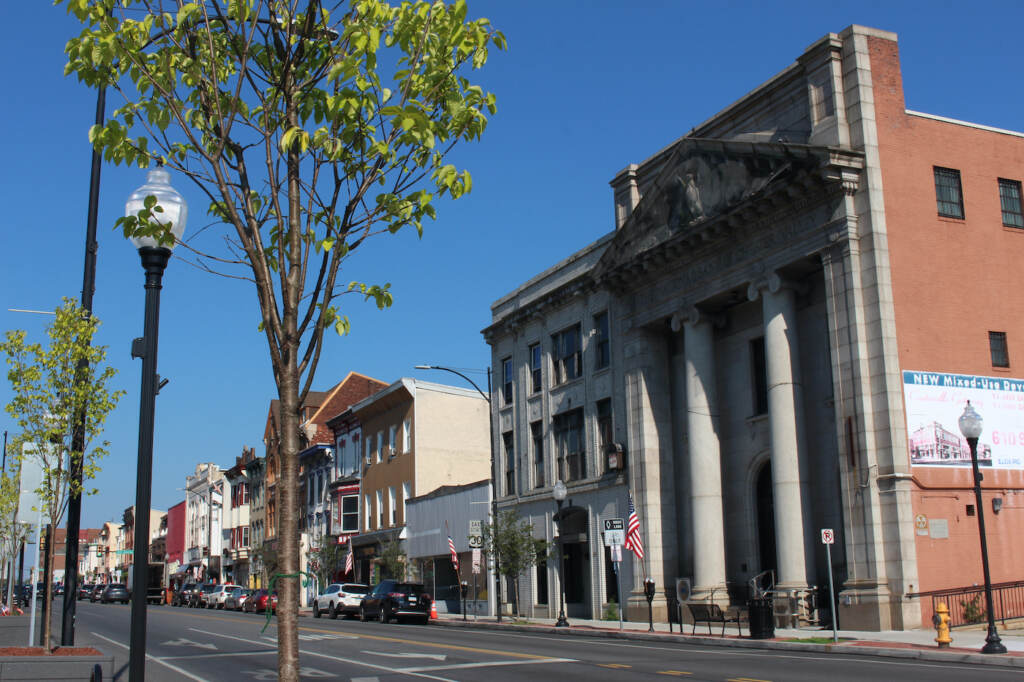
In its heyday, it was one of the largest industrial corporations in the world and brought countless jobs to the area.
But as business to the mill screeched to a halt, economic opportunities dwindled. Coatesville’s population was actually at its highest in the early 1900s as nearly 15,000 people called the city home. But it eventually dipped to 10,000 in the 1980s.
The population has rebounded to more than 13,000 people as of the 2020 census, but there’s another problem.
Climate change has transformed the Brandywine, which long served as a catalyst for economic development, into a threat to municipalities across the county and the rest of the watershed, like Coatesville and Downingtown.
To be clear, flooding in the area is nothing new. Those old enough to remember the flood of 1942 know that it left a huge impact on both areas and caused the Brandywine to roar through Downingtown.
But the severity and frequency of modern storms are upping the danger level.
Chester County and partners throughout Brandywine are working to address flooding
In 1962, Chester County officials adopted the Brandywine Creek Watershed Work Plan to balance the many needs in the waterways such as flood reduction. The solution? A dam.
Since 1996, the Hibernia Dam and the 90-acre Chambers Lake on the Birch Run tributary has provided recreation, flood mitigation, and even a steady water supply to Coatesville. The Chester County Water Resources Authority owns and operates the dam’s flood control facility.
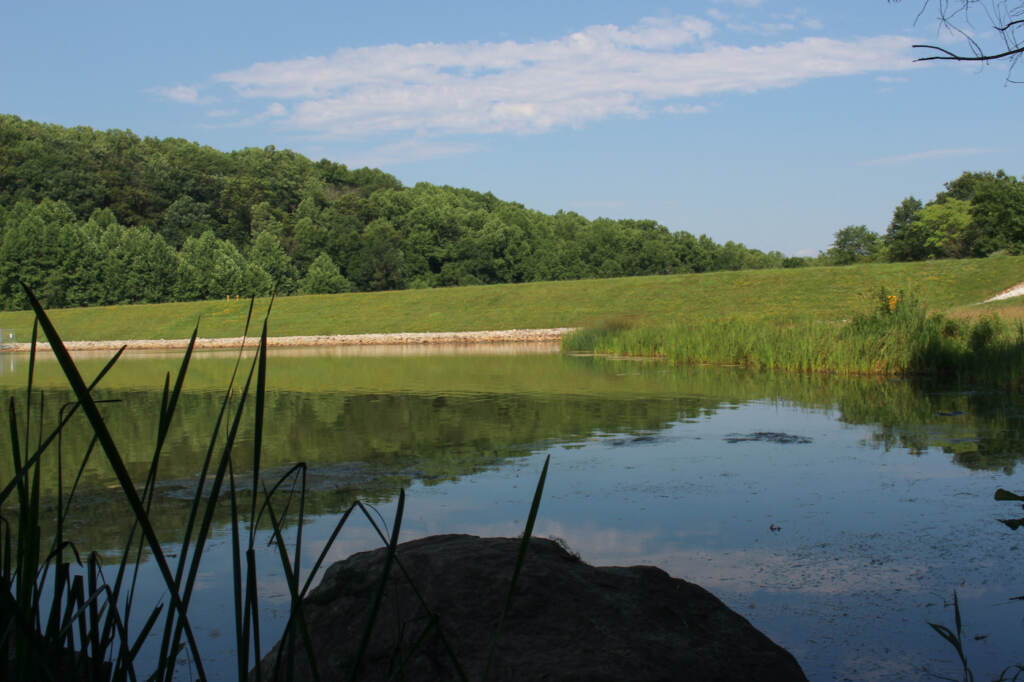
During storms, the dam has the capacity to detain an additional 257 million gallons of water. It serves as one of four flood control facilities that the authority utilizes to reduce flooding across the Brandywine Creek watershed.
And in recent years, the county has done significant work to rehabilitate those dams.
Dr. Seung Ah Byun, the executive director of the authority, said the county’s role is to provide recommendations and guidance to municipalities when it comes to stormwater management. She said it’s up to the boroughs and townships to enforce those plans and put them into action.
“Chester County has actually had pretty great stormwater regulations,” Byun said of the 2022 update to the county-wide model ordinance.
About 75% of municipalities in Chester County have actual stormwater infrastructure, which is monitored by the Pennsylvania Department of Environmental Protection, but they suffer from similar issues.
“A lot of the infrastructure is old. It needs to be upgraded. So it comes down to who is responsible [for managing] those stormwater basins,” Byun said. “A lot of that infrastructure has not been maintained or inspected. And nobody knows who’s responsible sometimes — sometimes it’s on the municipality, sometimes it’s on the landowner, or even if there’s a development and maybe a homeowner’s association is responsible and they may not know it.”
Many municipalities don’t even have their stormwater systems mapped out. Byun said DEP’s requirements focus on just addressing stormwater within municipal boundaries.
“And that isn’t always the best solution in a lot of these more urbanized areas,” Byun said.
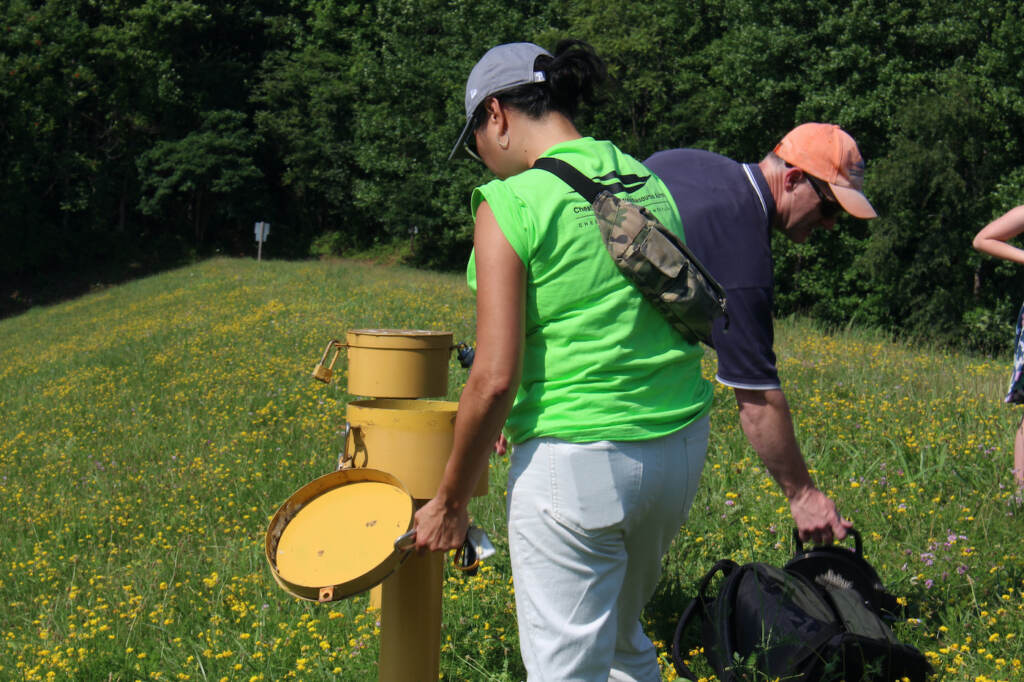
She believes county-wide collaboration throughout the entire watershed is key to truly addressing the stormwater issue.
“I think the county is more supportive of taking a holistic approach as opposed to just putting Band-Aids on the problems. It just doesn’t make sense for one municipality to address their stormwater issues when it’s just going to go downstream to the next municipality and make their stormwater issues worse,” Byun said.
She pointed to an upcoming study being done in partnership with the Brandywine Conservancy & Museum of Art in Chadds Ford, Delaware County, and the University of Delaware to identify hot spots and flood mitigation efforts that would have the most effect.
This level of collaboration is also how the Chester County Department of Emergency Services maximizes the level of support and coordination it can give before, during, and after any disaster, but especially storms.
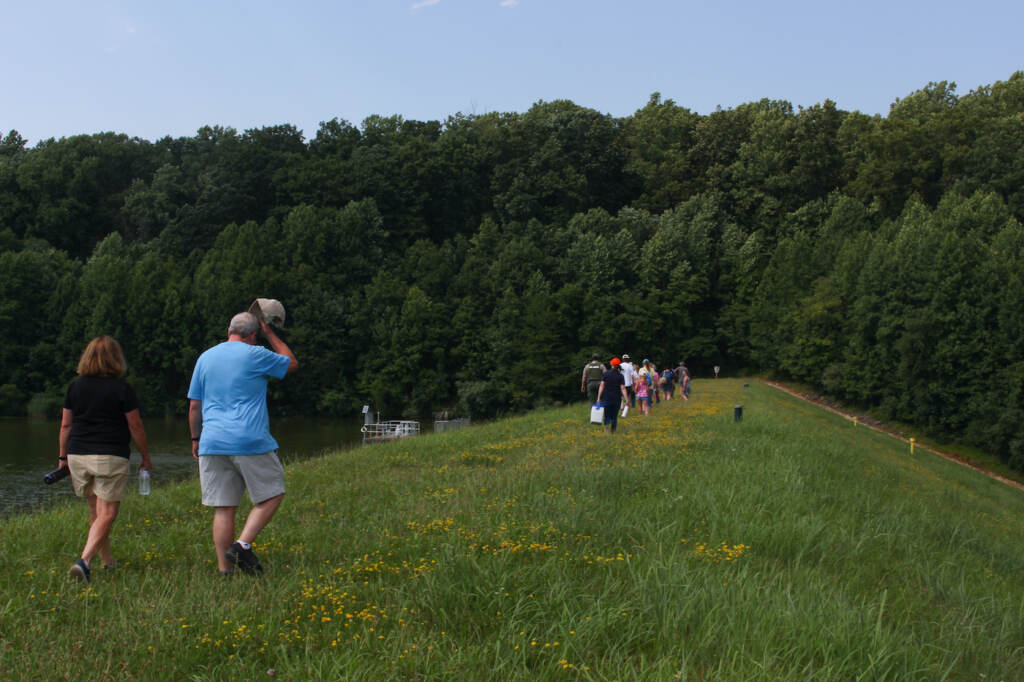
“So in the case of Hurricane Ida within the region, we shared a lot of resources across borders. We may call in assets from Delaware County, from Berks County, from Lancaster County. So there is a good level of preparedness right now, but we are even better prepared when we factor in the assets of our regional partners that we’re able to call in,” said Bill Messerschmidt, the director of the agency.
The department utilizes a two-pronged approach focused on individual and municipal preparedness to ensure people are ready for severe weather events and other emergencies.
“Certainly disasters and immediately following disasters, there’s increased awareness. But we want that awareness to be 24/7 365. We don’t want people to think about floods just five minutes before it happens. We want them to think about five years, five months before it happens,” he said.
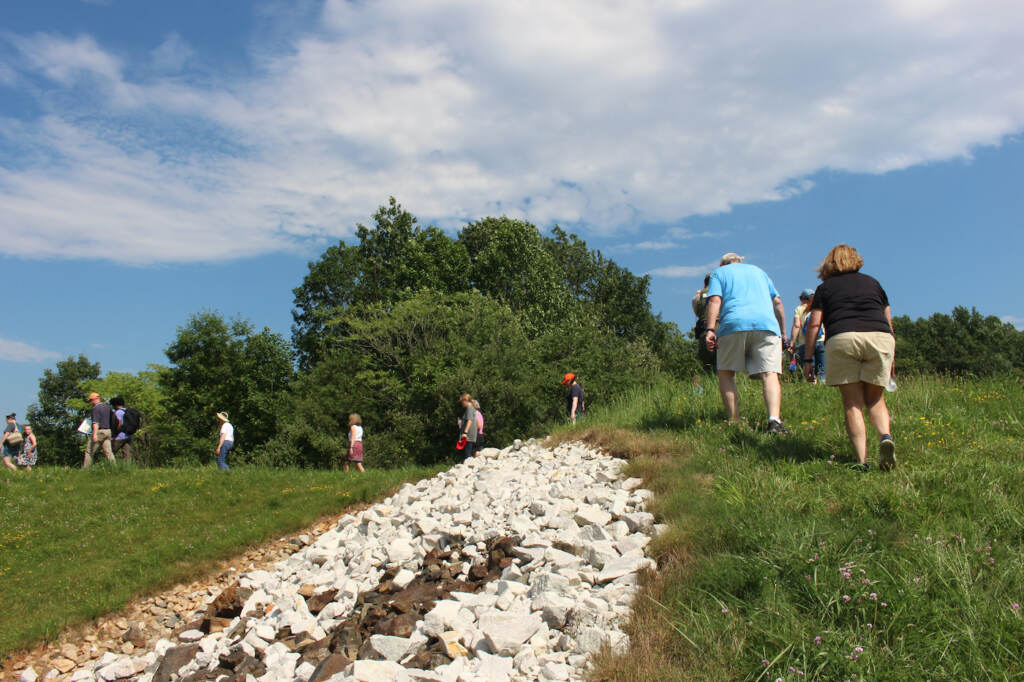
Is there a solution to Coatesville’s flooding issue?
When asked if Coatesville — or any municipality’s stormwater system in Chester County is prepared for another megastorm, Brian Winslow, the watershed conservation director for the Brandywine Red Clay Alliance, had a frank response.
“They aren’t designed for what Ida delivered … And I don’t think you could design for that much runoff,” Winslow said.
However, Winslow offered some optimism from what he views as changing behaviors from boroughs and townships. He said they’re paying greater attention to the flooding issue and trying to come up with solutions.
“I think you’re going to see more flood assessment and flood planning and hopefully it’s multiple-municipality, because it’s all one watershed. So I think that’s what we’re going to see more of in the future, which is a good thing. The fixes aren’t always easy,” Winslow said.
The Brandywine Red Clay Alliance describes itself as “a merger of the nation’s two oldest small watershed conservation non-profits.” The organization currently works to take care of local land, protect the environment from pollution, and educate the public.
When it comes to localized flooding, Winslow said “we like to say every drop matters.” He encourages residents to “catch the rain” or essentially look at your house and identify where the water goes on the property and think about the ways you can help it infiltrate the ground.
Winslow said rain gardens are also a way for individuals to help out the collective. He’s personally been inspired by the organization’s contribution to the Keystone 10 Million Tree Partnership.
This spring, the Brandywine Red Clay Alliance gave out 6,500 trees with the county conservation district to landowners interested in making their land more resilient to flooding.
Winslow remembers an 80-year-old resident pulling up to him on a state truck. She was there to pick up 200 trees for her retirement community. She told him that she and her neighbors were going to plant themselves.
“Our goal is that these trees are as tall as we are before we go,” she said.
Such gestures from the community have left him hopeful.
“I thought that was pretty inspiring that people are out there doing that kind of work on their little piece of land wherever they live — even if it’s for a short time,” Winslow said.

Get daily updates from WHYY News!
WHYY is your source for fact-based, in-depth journalism and information. As a nonprofit organization, we rely on financial support from readers like you. Please give today.






